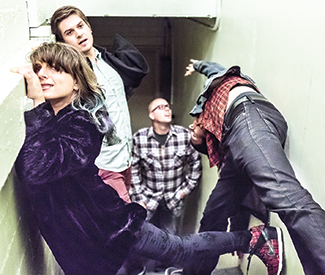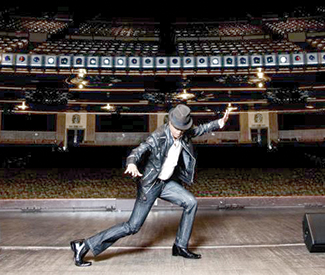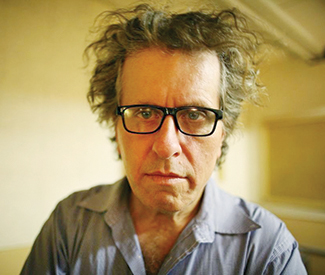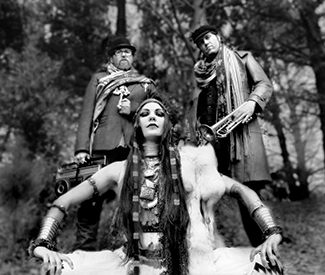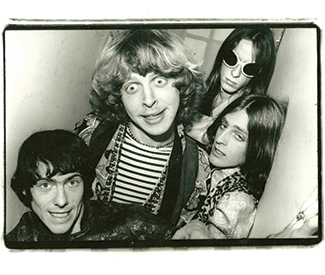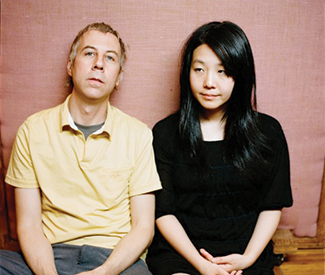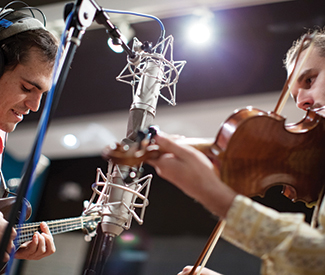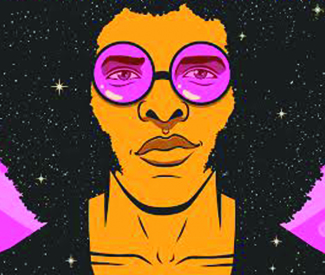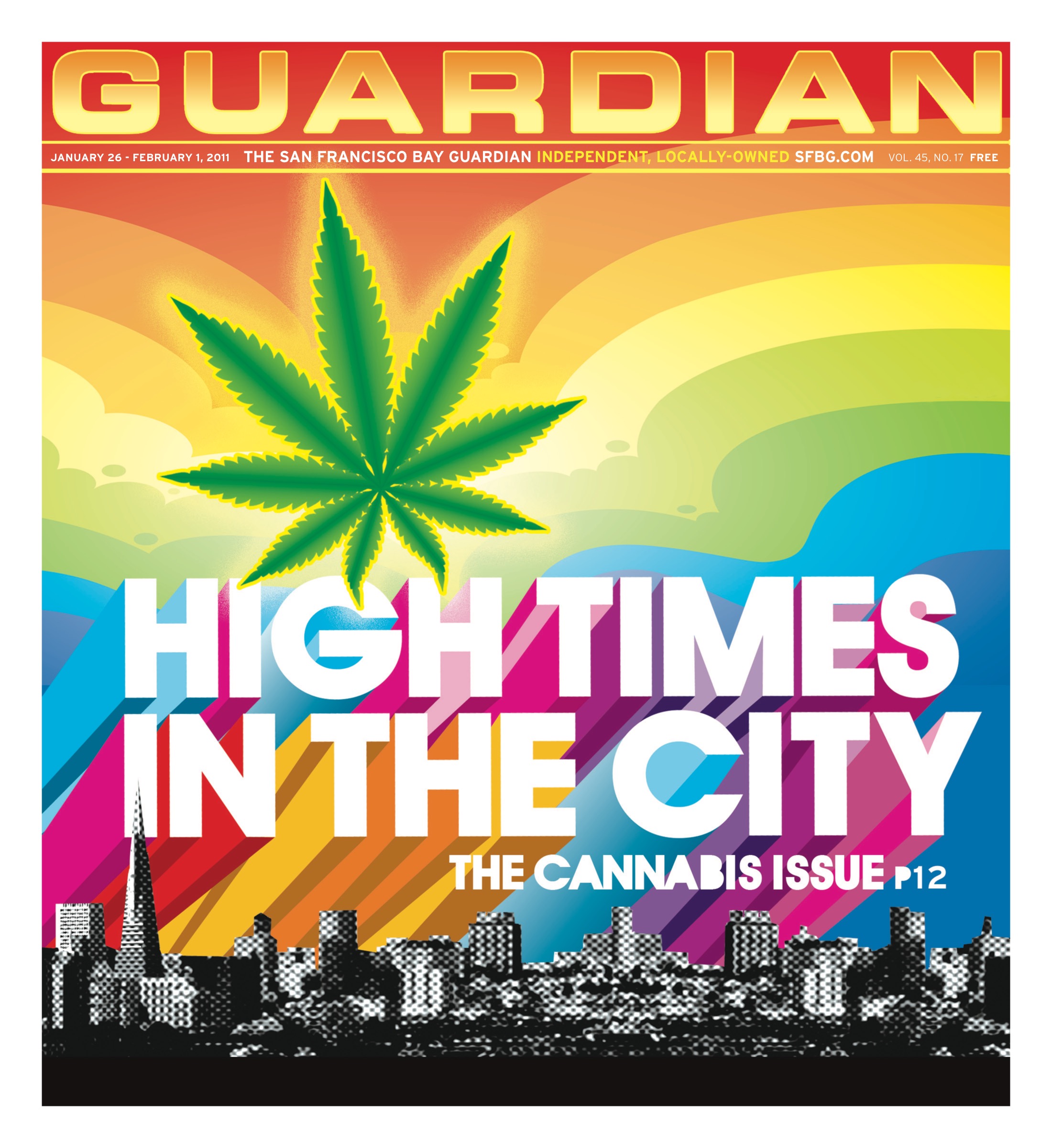esilvers@sfbg.com
LEFT OF THE DIAL Setting aside the darkly ear-wormy melodies, haunting vocals, and refreshingly crisp grunge-pop that goes into Everyone Is Dirty‘s sound, it’s singer Sivan Gur-Arieh’s violin — slicing sweetly above the chaos of a final chorus, adding a heightened sense of gothic romance to a bridge — that sets the Oakland art-rock quartet apart from the current fuzzy, grungey masses.
Good thing Gur-Arieh’s come to peace with the fact that she plays it.
“I’ve had a love-hate relationship with my violin since I was a kid,” says the singer, an Oakland native whose father taught her play when she was in elementary school. “I mean, growing up, you don’t always want to be staying home standing in front of a music stand, playing scales for two hours at a time. I’ve definitely put my violin under the bed and not played it…but it always came back out.
“I’m at a point where I realize it’s a tool, and it’s a tool I know how to use, and you don’t always get to choose that,” she says, earnestly, like someone speaking about a handicap. “Now, I’m just at, I play the violin. Whether it’s a nerdy instrument or not, I do it and it’s a part of me.”
It’s also a big part of the band’s charisma, an invitingness coming through music that technically should feel cold — sure, Gur-Arieh’s distinctive whisper-wail would be at home providing the soundtrack to an artsy vampire flick, but you also trust her, and the weirdness, in the same way you trust the Pixies‘ or Sonic Youth‘s weirdness; it doesn’t seem to be an affectation.
Then there’s a very ’90s sensibility about pop’s borders, reminiscent of SF’s own Imperial Teen, maybe Sleater-Kinney, and I want to say a more jagged Veruca Salt but maybe I’m just ridiculously excited that they’re reuniting so I’m hearing them everywhere? Regardless: Add in psyched-out guitar riffs from Christopher Daddio, a super warm, strong rhythm section courtesy of Tony Sales on drums and Tyler English on bass, and you start to understand why the four-piece, at just a year and a few months old, has earned serious devotees around the Bay Area as well as highly coveted free studio time at Different Fur via Converse’s Rubber Tracks pop-up — all before releasing a full-length record.
That’s in the works, Gur-Arieh assures me. This January marked both the band’s one-year anniversary (its first show as a four-piece rocked Cafe Du Nord, sigh) and another major milestone: They signed with Breakup Records, the husband-and-wife-run label, formerly out of Oakland (now out of Portland but with a heavy bias toward bands from their former hometown); the label will be producing EID’s first full-length at the end of May.
In the meantime, the band has been releasing teasers of what we can expect, like “California” — a full psych-rock sprint that gets undeniably reminiscent of the Dead Kennedys‘ “California Uber Alles” in its chorus, when the layers of sci-fi guitar drop out for Gur-Arieh to admonish “California, put your pants on/you’ve had too much to drink.” They just re-recorded that one for the full-length, at Daddio’s home studio, where they do most of their recording. “He’s an engineer, and he’s a perfectionist,” says the singer. “The fact that he’s able to make everything sound so good just using mic placement…it’s incredible to me.” On “Mama, No!!!” things take a turn for the Nirvana-esque, though the band keeps it dynamic by playing expertly with contrasts — the sing-song of Gur-Arieh’s voice with unrestrained drum crashes, the urgent peal of violin over fuzzed-out guitar.
She and Daddio, who met when Gur-Arieh was in film school in Chicago and New York (he did sound design for her thesis film), share primary songwriting duties; when the singer moved back to the Bay Area, they started seeking out the band’s rhythm section. Film still plays a big part in how the singer thinks about music, she says. “I make our videos for the most part,” she says. “They’re very connected to me. I’ve always been a musician, but I’ve also always been painting, writing poetry&ldots;film is kind of an extension of music, to me.”
Everyone Is Dirty will be sharing a bill on April 5 with a pair of similarly dramatic, cinematic, female-fronted bands: Rich Girls, the new(ish) gothy garage project from Luisa Black (formerly of The Blacks) opens, and Happy Fangs, whose contrasting male-female vocal dynamic, courtesy of Rebecca Bortman and Mike Cobra, has just been supplemented by the addition of Sacramento drummer Jess Gowrie. It’s the kind of lineup that has the potential to kick your ass, then wrap it up and hand it back to you with a sweet smile as an experimental art project. I mean this in an entirely positive way.
“I’ve been really into this violin player from Chicago named Leroy Jenkins lately,” says Gur-Arieh, when asked what she’s been listening to. “If you look him up on YouTube, his playing was so weird and messy and imperfect, and that’s super inspirational to me. That’s unique especially for violin players, because they tend to be so focused on perfection, on playing other peoples’ music perfectly, and he was an emotional player — not afraid to make the violin sound piercing,” she says, “and dirty.”
Happy Fangs w/ Everyone Is Dirty and Rich Girls
Sat/5, 8pm, $10
Bottom of the Hill
1233 17th St, SF
www.bottomofthehill.com
While we’re riding high on the female-fronted band kick, a few other kick-ass ladies to look out for this month:
Given the current classic funk-soul revival — see Sharon Jones‘ sold-out stint at the Fillmore last week — there’s just no good reason why Wicked Mercies hasn’t blown up yet. Fronted by three seriously talented female vocalists, with a brass section that culls from the best of the old-school San Francisco soul scene, the band – which bills itself as “working class talent” that brings “the sound of San Francisco street soul to the people” — has been a dance party-starting staple at funk-friendly venues like the Boom Boom Room for a few years now, so there’s little doubt that a room as small as Amnesia is going to get sweaty very quickly. Remember to drink water.
Wicked Mercies
With the Go Ahead
Sat/5, 9pm, $8-$10
Amnesia
853 Valencia, SF
www.amnesiathebar.com
Forming a band when you’re in middle school that actually goes on to critical praise and some commercial success before you’ve graduated from high school means a few things. For The She’s, which the Bay Guardian ever-so-aptly identified as a band On the Rise in 2013, one thing it means is giving interviews about your upcoming second EP that involves quotes like this one, from singer-guitarist Hannah Valente in a recent Bay Bridged interview: “It’s going to sound a lot different. On our first album, there are songs that we wrote in eighth grade.”
All good-natured (and, let’s be real, envious) ribbing aside, there’s no question that The She’s have pretty much won the hearts of any red-blooded San Franciscan with an affinity for summery dream-pop; they’re also entering a stage of band-life reserved for artists who achieve a certain level of success while so young that their age becomes part of the shtick. This next stage is when they’re going to have to prove that they’re talented songwriters and performers, period, as opposed to being really, really good for a band made up of high school kids. For the record, I think the former is true, but their sophomore EP, Dreamers, due out April 15, will have to do the talking. Catch ’em for free at Amoeba on April 12, or the official (all ages!) release show at the Rickshaw Stop.
The She’s
With TV Girl, Lemme Adams, and Cocktails
April 18, 9pm, $10-$12
Rickshaw Stop
155 Fell, SF
www.rickshawstop.com

